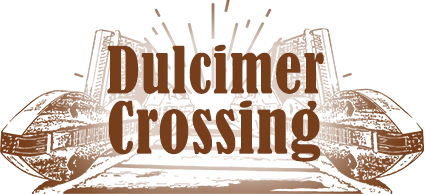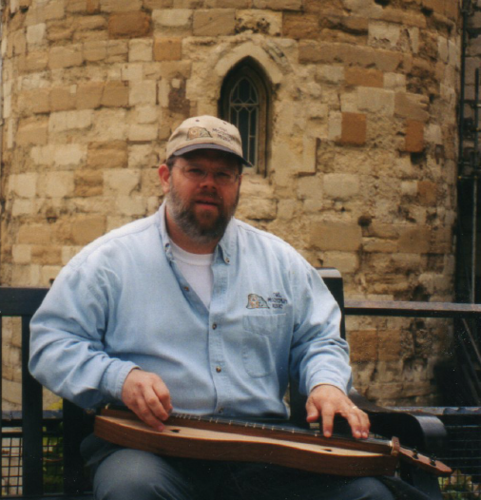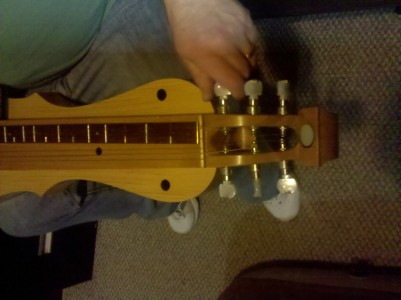Blog
music theory
Dulcimercrossing.wordpress.com Blog Year 2014 in review
The WordPress.com stats helper monkeys prepared a 2014 annual report for this blog.  Here's an excerpt:
Here's an excerpt:
The concert hall at the Sydney Opera House holds 2,700 people. This blog was viewed about 11,000 times in 2014. If it were a concert at Sydney Opera House, it would take about 4 sold-out performances for that many people to see it.
Click here to see the complete report. Thanks for reading and commenting and sharing this blog with others who love dulcimers! Let us know if there is something …
Mission: Take the Dulcimer Pledge
by Steve Eulberg I have a mission: I am seeking to equip, support, challenge and encourage musicians who play dulcimer. As I teach across the US in clubs, festivals and workshops, I ask my mountain dulcimer students to raise their right hands and take this pledge. So, stop whatever you are doing right now, raise your right hand and take this pledge with me. It will make a difference in your life!
Odd Meters
 by Steve Eulberg Playing traditional instruments in the western world, we get quite used to "square" or "even" rhythms and meters in the songs we play. Marches and Reels are in (4/4) time; Polkas are in (2/2 or 4/4). Even jigs (6/8) have 2 pulses in their measures. Waltzes (3/4) have a strong beat on 1. Slides (12/8 or 6/8) and Slip Jigs (9/8) have multiple pulses in their measures, but what all of these tunes tend to have in common is that they have a regular way to be counted based on the t…
by Steve Eulberg Playing traditional instruments in the western world, we get quite used to "square" or "even" rhythms and meters in the songs we play. Marches and Reels are in (4/4) time; Polkas are in (2/2 or 4/4). Even jigs (6/8) have 2 pulses in their measures. Waltzes (3/4) have a strong beat on 1. Slides (12/8 or 6/8) and Slip Jigs (9/8) have multiple pulses in their measures, but what all of these tunes tend to have in common is that they have a regular way to be counted based on the t…
Chromatic Mountain Dulcimer--The Dark Side?
"traditionalists" who argue for a standard diatonic dulcimer ("I don't want no extra frets bygummit!");
"neo-traditionalists" who argue for a modified diatonic dulcimer with a 6+ fret ("well it is pretty standard these days");
"practical-neo-traditionalists" who are supporters of multi-modified diatonic dulcimer with 6+ AND 1+ frets; ("but I NEED that extra fret to play C and F chords!")
"people on the DARK side" who are supporters of entirely chromatic mountain dulcimers. …
Benefits and Limitations of Different Tunings on Mountain Dulcimer? Part 1
What is Drone Style?
Once we have learned the melody of a tune we can begin adding notes in order "fill out" the sound of the tune. The easiest way to do this is to play "drone style". This is actually the traditional way to play the old mountain dulcimers which did not have frets that extended all the way across the fretboard, but only were present under the melody strings.

On the mountain dulcimer, the player plays the melody on the string(s) which are required for the melody and simply strums all…
What is Melody-Only Style?
When we are playing the melody of a tune, without adding any chords, bass notes, harmony notes or drones, this is playing our dulcimers like they are melody-only instruments like flutes, trumpets, clarinets or trombones. This way of playing focuses on the melody and doesn't have the distraction of other notes.
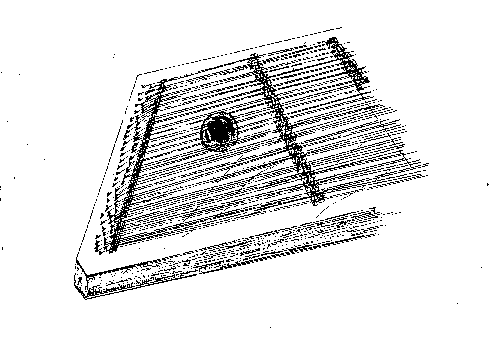
On the hammered dulcimer, the player is playing only the melody of the tune.

On the mountain dulcimer, the player is playing on the string(s) which are required for the me…
Why use the DAA tuning?
With mountain dulcimer, every tuning has benefits to recommend it. Every tuning also has limitations.
Someone wrote to me recently to ask why we include lessons on the DulcimerCrossing website in the DAA tuning. Here are the 4 reasons that I wrote back in response:
Playing Authentic and Plagal Tunes
Here are two words that may be unfamiliar to you, but which I find most helpful for determining where to look to play tunes on both mountain and hammered dulcimers: Authentic and Plagal. (for more on Plagal, see below)
Authentic Tunes are those whose notes are generally found between Do and the octave do.
Plagal Tunes (in a use of the term by ethnomusicicologists) are those which are centered on Do, from Sol below Do to sol above Do. This is illustrated by the chart below:
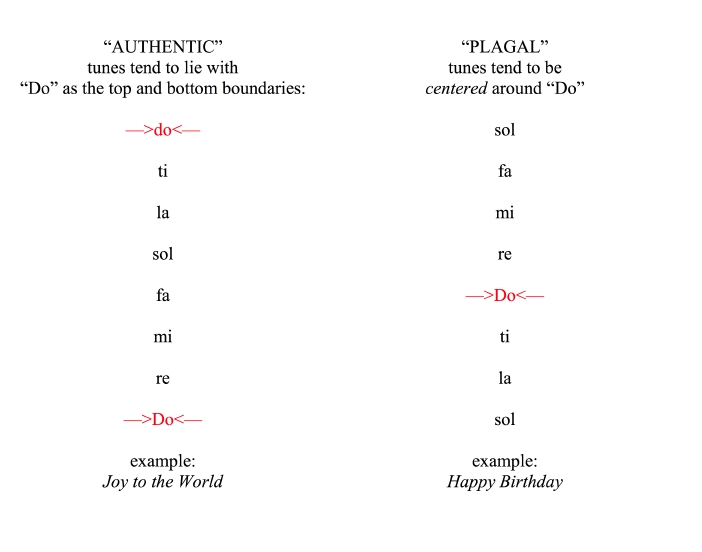
Now ho…
Mountain Dulcimer: "1/2 the frets, 1/2 the strings but All the Music!"

The mountain dulcimer has "Half the strings, and half the frets, but ALL the music," so quipped my friend and colleague, Joe Collins at the Western Carolina Dulcimer Week this summer in Cullowhee, NC.
He was comparing a 3-string, diatonic mountain dulcimer to a 6-string, chromatic guitar.
Many people like ask me if a dulcimer is "easy to play."In my experience there are no instruments that are "easy to play." But, there are some instruments which are more accessible than others.
A devout appreciat…
Categories
- News (10)
- Events (4)
- News (6)
- Events (4)
- subscriber news (236)
- mountain dulcimer (128)
- hammered dulcimer (131)
- uncategorized (6)
- lessons (190)
- mountain dulcimer (199)
- hammered dulcimer (155)
- history (22)
- music theory (40)
- octave (1)
- plagal cadence (1)
- dulci-bro (73)
- fingerpicking (3)
- fingerstyle mountain dulcimer (4)
- nina zanetti (4)
- aeolian (2)
- dorian (4)
- ionian (3)
- lydian (1)
- mixolydian (3)
- modes (2)
- traditional (2)
- tuning (4)
- music education (2)
- NSME (1)
- standards (1)
- drone (3)
- folk alliance (1)
- jonah brody (1)
- koto (1)
- chromatic mountain dulcimer (8)
- sam lee (1)
- scottish folk song (1)
- linda ratcliff (5)
- practice (29)
- chromatic mountain dulcimer (66)
- dulcimercrossing.com (2)
- erin rogers (7)
- building (8)
- black mountain (1)
- jerry read smith (1)
- Joshua Messick (1)
- song of the wood (1)
- don pedi (5)
- fiddle whamdiddle (9)
- miss mcleod (2)
- steve eulberg (30)
- vi wickam (9)
- buying (1)
- choosing (1)
- purchasing (1)
- orphan girl (1)
- copyright (1)
- amplification (2)
- contact pickup (1)
- eulberg (4)
- microphone (2)
- pickup (2)
- berkeley (1)
- colorado (2)
- festivals (4)
- kentucky (1)
- scholarship (1)
- western carolina (1)
- noter (2)
- clubfooted jib (1)
- dgd (2)
- dgd tuning (1)
- special event (31)
- david massengill (2)
- reverse ionian (1)
- chuck boody (1)
- concertina (1)
- deedee tibbits (1)
- dulcimer (7)
- evart (1)
- evart funfest (1)
- linda foley (1)
- michigan (1)
- original dulcimer players club (1)
- fingerstyle (11)
- gebhard woods (1)
- technique (1)
- harmonics (1)
- dan delancey (2)
- june apple (1)
- linda thomas (3)
- modal (1)
- expression (1)
- playing expressively (1)
- dulcimer pledge (1)
- christmas (2)
- nativity (1)
- DAC (2)
- minor more (1)
- mississippi sawyer (1)
- holiday (5)
- joy to the world (1)
- jingle bells (1)
- reverse ionion (1)
- hand independence (1)
- hand separation (1)
- lullabye of muffe (1)
- tina gugeler (1)
- absolute beginner mountain dulcimer (1)
- beginner (2)
- mountain (3)
- string-side up (1)
- absolute beginner hammered dulcimer (1)
- blog (2)
- dulcimercrossing. (1)
- topics (1)
- blues (4)
- resonator (4)
- dulcimer orchestra (2)
- kitty puss (1)
- mike clemmer (1)
- noter style (2)
- jam survival (7)
- butch ross (3)
- looping (1)
- intro (4)
- neal hellman (4)
- erin mae lewis (9)
- rehearsal (3)
- italian (1)
- lauda (1)
- irish (1)
- slipjig (1)
- rhythm (2)
- robert force (2)
- tuner (1)
- exercises (1)
- scales (1)
- devotions (3)
- hark advent (1)
- the glad sound! (1)
- chords (3)
- chromatic (4)
- erin (1)
- theory (7)
- advent (5)
- preparation (4)
- stir up (1)
- appalachia (4)
- hillbilly (1)
- mountains (1)
- traditional music (1)
- dampers (1)
- hearts of the dulcimer (3)
- patricia delich (2)
- wayne jiang (2)
- appalachian (1)
- John Jacob Niles (1)
- Live Events (28)
- Premium Level Membership (2)
- habits from the muse (1)
- progress (6)
- support (2)
- Anna Muckova (1)
- cimbalom (1)
- CWA (1)
- Czech Republic (1)
- Magdalena Muckova (1)
- nonsuch (1)
- Slovak Republic (1)
- podcast (1)
- aubrey atwater (2)
- jean ritchie (2)
- log-in (1)
- update (1)
- lucky (1)
- performance (9)
- preparing (1)
- study (1)
- dulcimers (1)
- wendy songe (2)
- bluegrass (2)
- growth (1)
- resolutions (2)
- risks (1)
- capo (1)
- snark (1)
- fiddle (61)
- criticism (2)
- judy klinkhammer (1)
- miles davis (2)
- wrong note (1)
- live and let live (1)
- style (1)
- barlow knife (1)
- old school old-time (2)
- marie kirby (1)
- bass mountain dulcimer (1)
- elaine conger (1)
- larry conger (1)
- practice smarter (8)
- musical journey (1)
- piano (1)
- calm (1)
- dog (1)
- su la li (1)
- bluebird cafe (1)
- inspiration (3)
- new input (2)
- trust (1)
- practice space (2)
- quite (1)
- how to practice (8)
- you are what you practice (1)
- workshop (5)
- rich chords (2)
- kaitlin pabo-eulberg (1)
- hooked on dulcimers (1)
- humor (1)
- blue water thinking (1)
- creativity (2)
- environment (2)
- original tunes (1)
- 1+ fret (1)
- chopin (1)
- classical (1)
- assessment (1)
- skill levels (1)
- waltz (1)
- caledonian club (1)
- ensemble (1)
- group (1)
- dulci-tune (1)
- tuning game (1)
- love (2)
- workout (1)
- learning (8)
- teacher (6)
- self-taught (1)
- how long (1)
- jam sessions (6)
- learn to play (1)
- strategies (2)
- fariña (1)
- mimi (1)
- pete seeger (2)
- rainbow quest (2)
- goals (1)
- planning (1)
- backing tracks (6)
- matthew dickerson (2)
- concert (1)
- erin mae (2)
- guitar (5)
- deborah hamouris (3)
- dj (2)
- freight and salvage (1)
- classic (1)
- licks (1)
- rock (1)
- berkeley dulcimer orchestra (1)
- premiere (1)
- banjo (1)
- frank proffitt (1)
- frank warner (1)
- tom dooley (1)
- baker (1)
- binding (1)
- blue lion (1)
- bob (1)
- gluing (1)
- janita (1)
- live (1)
- tips (1)
- spouse (1)
- amplified (1)
- DI box (1)
- digital interface (1)
- sound reinforcement (1)
- 2nd Set Concert (2)
- contest (1)
- flash mountain dulcimer brigade (2)
- JimJim & the FatBoys (1)
- Pecan Grove (1)
- walnut valley festival (2)
- winfield (1)
- wvfest (1)
- thinking (1)
- case (1)
- cross-legged (1)
- grip (1)
- safe dulcimer (1)
- sit (1)
- slip (1)
- stand (1)
- stool (1)
- strap (1)
- learn (3)
- mistakes (1)
- successes (2)
- herbie hancock (1)
- improvising (1)
- jazz (2)
- lois hornbostel (2)
- wrong chord (1)
- atlantic (1)
- barbara allen (1)
- frank profitt (1)
- scots-irish (1)
- chord wizard (1)
- diatonic (2)
- equi-distant (3)
- tom strothers (1)
- tool (2)
- busker (1)
- tsimbaly (1)
- ukraine (1)
- ukrainian (1)
- calendar (1)
- schedule (1)
- baritone (1)
- concert window (3)
- katie moritz (1)
- faq (1)
- frequently asked questions (1)
- logged in (1)
- navigation (1)
- old time (1)
- patreon (1)
- shape-note (1)
- special (1)
- carrell (1)
- geoff reeve-black (1)
- malvern (1)
- presnell (1)
- articulations (1)
- chicken reel (1)
- conger (1)
- soldier's joy (1)
- basic level membership (1)
- caring for your instrument (1)
- winter weather (1)
- god rest ye (1)
- rhythmic displacement (1)
- builder (1)
- tam kearney (1)
- toronto (1)
- don neuhauser (1)
- slide (1)
- ashley ernst (1)
- dan and angie landrum (1)
- dpn (1)
- dulcimer players news (1)
- dulcimersessions.com (1)
- maddie macneil (1)
- arkansas traveler (1)
- Mark Alan Wade (2)
- 3d playing (1)
- playing across the strings (2)
- chord symbols (1)
- understanding chords (3)
- dulcimer club (1)
- class (1)
- habits (1)
- skills (1)
- jimmy driftwood (1)
- failures (1)
- hours (1)
- youtube (1)
- arranging (1)
- bill robinson (1)
- cold winter night (1)
- karen mueller (3)
- jig (1)
- DAd tuning (1)
- hyfrydol (1)
- hymn (1)
- 2020 (1)
- premium (1)
- gounod (1)
- hitchcock (1)
- dan evans (1)
- spotted pony (2)
- steveeulberg (1)
- nylon-string (1)
- stephens lutherie (1)
- musical devotions (1)
- award (1)
- fernando sor (1)
- hammered (1)
- understanding (1)
- lent (1)
- leap forward (1)
- power of music (2)
- sharing (1)
- persistence (5)
- Practice (4)
- routine (1)
- tour (1)
- new website (1)
- arrranging (1)
- celtic (1)
- single jig (1)
- mountain dulcimer (3)
- busking (1)
- audio (1)
- playback (1)
- protection (1)
- adaptations (1)
- dulcimer acquisition syndrome (1)
- dulcimer acquisition disease (1)
- contests (1)
- lessons (1)
- identify (1)
- apps (1)
- motivation (1)
- hands (1)
- In Memoriam (1)
- guitar (1)
- archive (1)
- concerts (1)
- mountain dulcimer (2)
- hammered dulcimer (1)
- lessons (1)
- workshops (1)
- self-assessment (1)
- learn (1)
- greek (1)
- mindset (3)
- accountability (2)
- encouragement (1)
- prodding (1)
